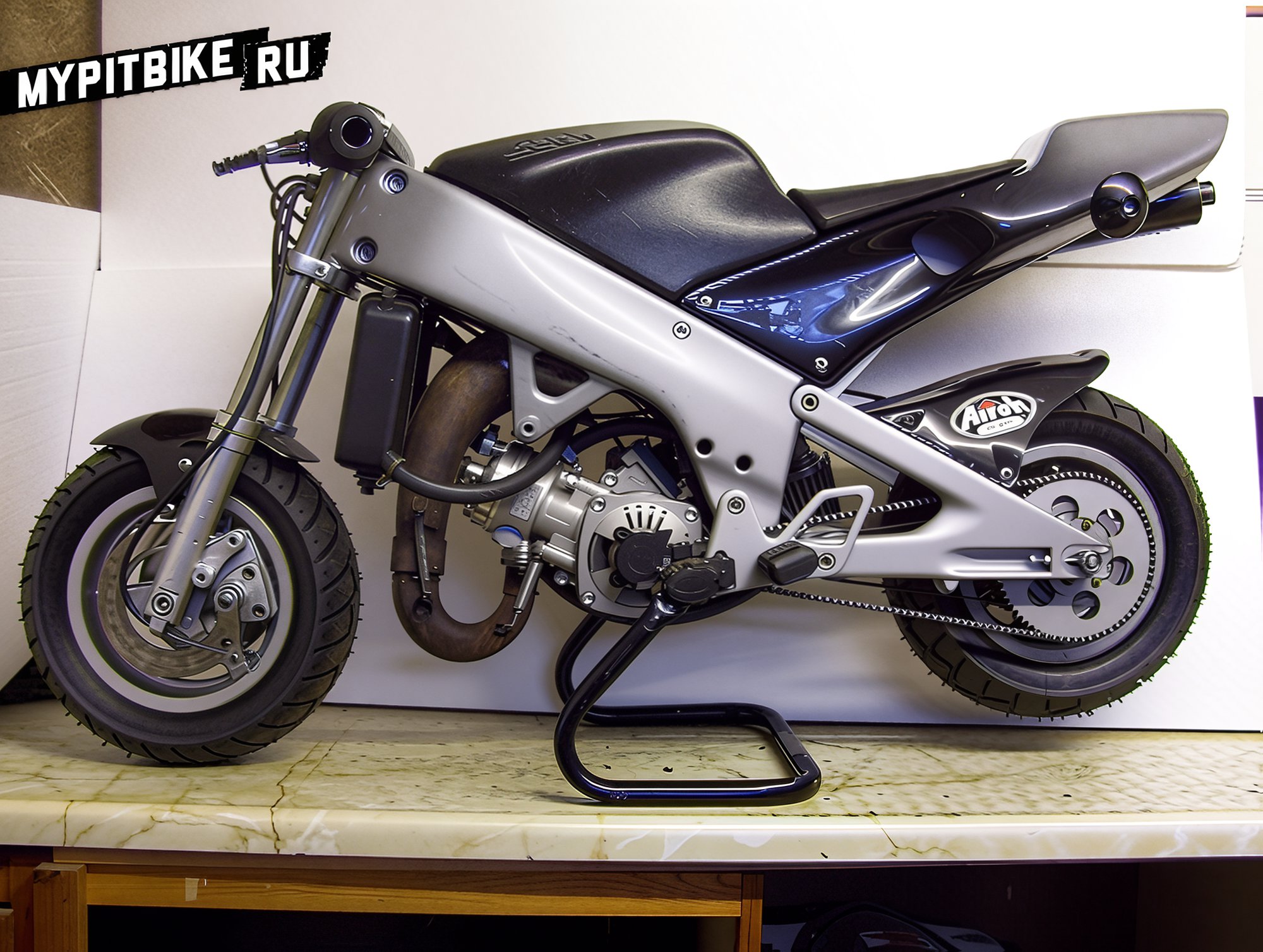Classic Minibikes: The Evolutionary Journey
On the pages of our virtual magazine, we have already mentioned the grandfathers of modern pit bikes - minibikes with rigid frames and Briggs & Stratton engines, as well as other contraptions made from lawnmower parts. However, aside from a few black-and-white photographs, there was little to show until I recently stumbled upon an intriguing video about the company Taco Mini Bikes, which has been building and selling minibikes since the 1960s. We will now delve into the history of minibikes and showcase a plethora of rare photographs, culminating with the video itself.
The History of Minibikes
The emergence of minibikes coincided with the advent of go-karts. The first of these motorcycles were equipped with two-stroke engines from washing machines and other household appliances. The identity of the inventor of the very first minibike remains unknown, as many at the time attempted to assemble a "Harley" from the clutter accumulated in their garages.
Since their inception in the late 1950s, minibikes have gained popularity worldwide. Like go-karts, the first minibikes were crafted by enthusiasts in their garages. It all began in Japan. The Japanese, with their innate passion for sports motorcycles, fitted a chainsaw engine onto a rigid two-wheeled chassis, attempting to emulate go-kart prototypes. People organized local races on homemade minibikes, and no one imagined that this type of motorcycle would become so popular globally.
Later, minibikes were utilized by technical and service personnel at drag races, particularly in the 402-meter races. The maneuverability of these small motorcycles allowed technicians to swiftly navigate the cramped, equipment-laden pit stops. Soon, minibikes acquired another name. Alongside the terms "minibike" and "pocket bike", they began to be called pit bikes.
People would often take work-related items home, and soon the same service personnel began riding minibikes around their own country properties. Seeing adults racing on small motorcycles, children began persuading their parents to buy them one as well. This created a demand for minibikes, and supply quickly followed.
By the late 1960s to early 1970s, the peak of interest in this type of technology, a minibike market already existed in the United States with major manufacturers such as Arctic-Cat, Rupp, Taco, Heath, Gilson, and Fox. The equipment produced by Rupp had already achieved cult status and had its own admirers. In the Soviet Union, the concept of a minibike did not exist, nor was there a market as such, but echoes of this trend can be found in old books on self-constructed motorcycles.

Modern Pocket Bikes
The very first races were held on minibikes in the 1960s, but they were not as popular as go-karting. It was only a decade later that the modern history of minibikes began. In 1975, the Japanese company Fuki Planning started producing the first series of minibikes — the "Bullet".
A year later, the first mini-motorcycle competition was held near Tokyo. Soon, other Japanese minibikes appeared, such as the "Dandy," "Jaxson," and "Shinwa." Over time, minibikes also gained popularity in Europe. In the 1980s, the Polini brothers (Italy) decided to establish their own production of these motorcycles, considering Japanese minibikes insufficiently powerful. They named their series Dream Bike.
While Japanese manufacturers were installing primitive lawnmower engines on minibikes, the Italians developed an engine specifically designed for minibikes. This period can be considered the beginning of the history of modern Pocket Bikes. Modern minibikes are small replicas of sport bikes, technologically advanced machines designed with all the achievements in motorcycle engineering, capable of reaching speeds of 60-100 km/h.
Now, "minis" are equipped with engines specifically made for mini motorcycles, frame rigidity is calculated, water cooling is installed, and so on. As a result, the "mini" transforms into a full-fledged mini-motorcycle, ceasing to be just a "frame with wheels and a lawnmower engine."
Most manufacturers of pocket bikes are located in European countries: GEM (UK), Bianchi (France), SG (Italy), Blata (Czech Republic), Polini, Pasini, D.M., GRC, Vittorazi, Stamas, I-Esse, ZPF, ATM. The minis produced by these companies vary according to the same principles as standard motorcycles, namely in terms of frame, fairing, wheels, and engine.
Many great motorsport masters began their careers on minibikes. Among them are Valentino Rossi, Shinya Nakano, Marco Melandri, and Manuel Poggiali. Although minibikes are no longer their primary category, they remain enthusiasts of motorcycles in this class.
Classic Minibike Exhibition
In this episode of HOT ROD Unlimited: Joe Rivello from Taco Mini Bikes builds a classic custom, and we will also see Joe Sebergandio, the founder of Joe Mini Bike Reunion, and take a look at his collection of classic minibikes gathered from all over the United States.